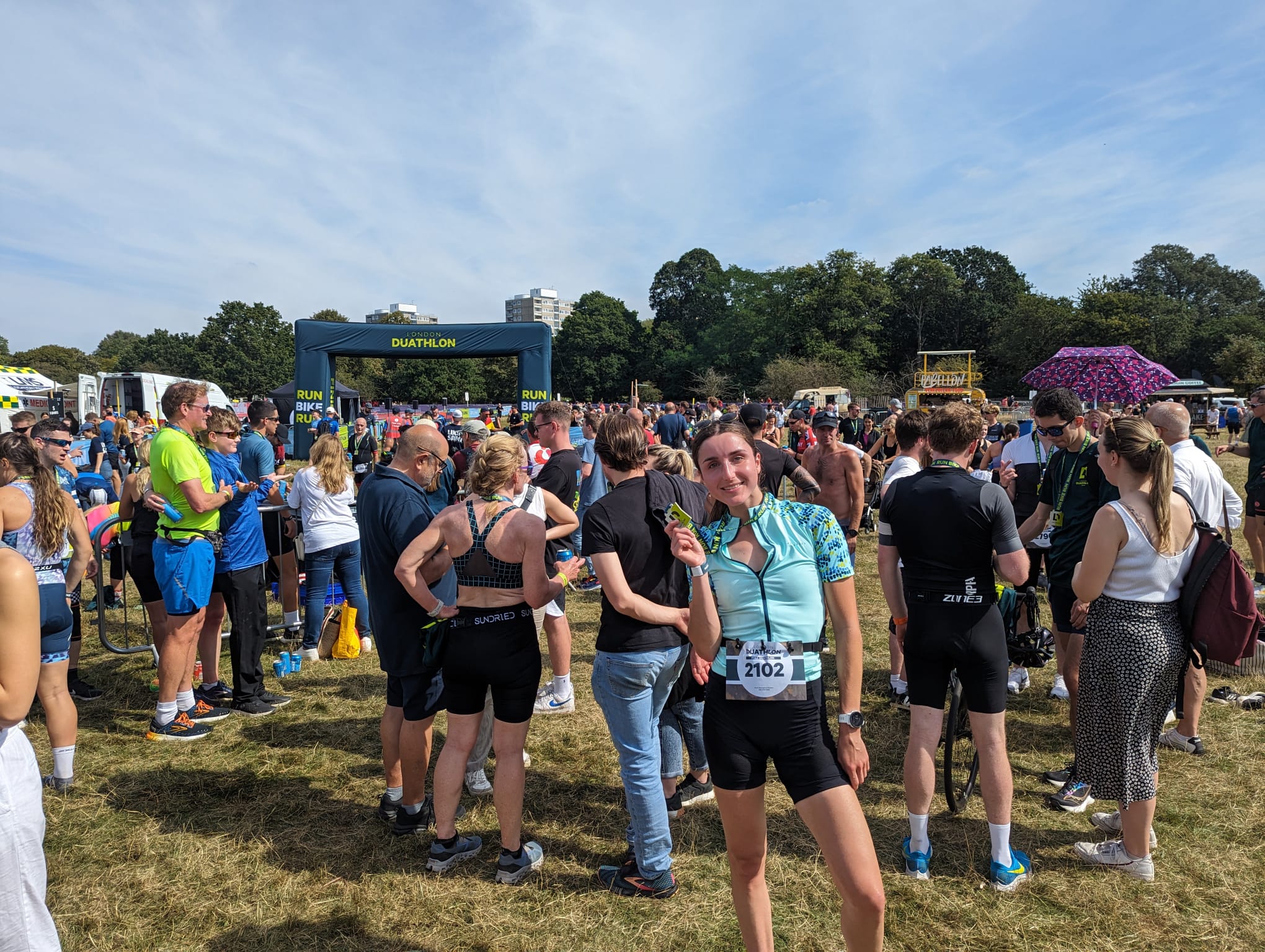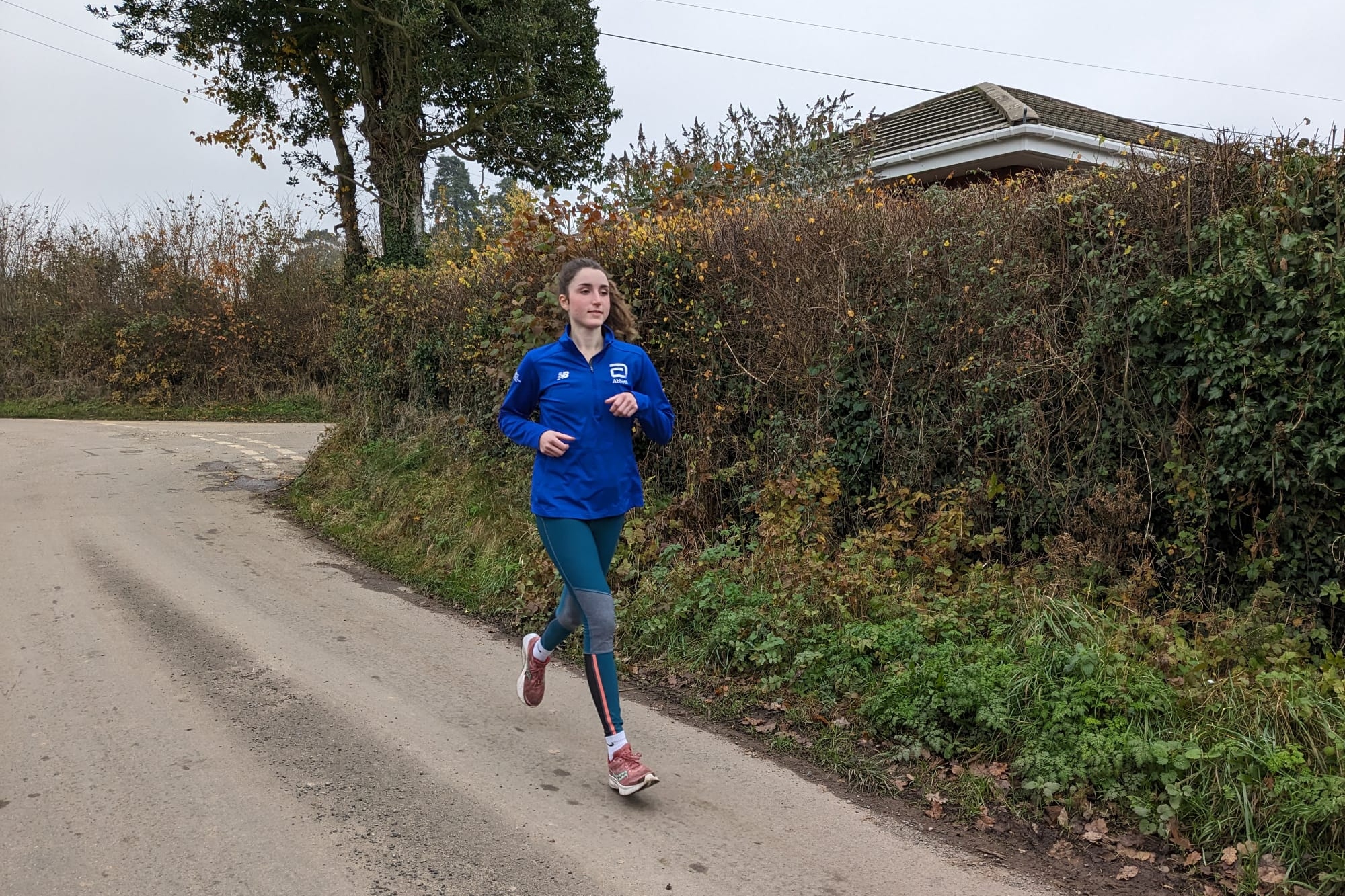I run, cycle and lift weights - and I've never been fitter or felt better
Staying fit and healthy doesn't need to be about riding your bike every day, in fact, a little more variety might just be what we all need

I’m a cyclist, but I’m also a runner. Oh, and I also strength train in the gym. As someone who trains in a 'hybrid' way, combining elements of both strength and endurance into my training, I wanted to find out if splitting my time across multiple sports makes me a better, or worse, cyclist.
Training for everything and nothing can be incredibly empowering. It’s fun, dynamic and I love the variation it brings, but I’m aware that practicing three different disciplines at the same time can be counterproductive. It also means that I don’t really identify with one particular group - I’m not just a cyclist, or just a runner - which in itself can feel isolating at times.
I had a moment this year when I thought I'd found my 'thing' - I competed in my first ever duathlon, which is essentially like a triathlon without the swimming element. While I loved every minute of it, and was able to practice cycling and running for a specific purpose, I couldn’t wait to get back in the gym after three months of endurance training. I love them all, but I’m not sure there’s a space for me yet which caters to all elements of my training style.

Although I’m keen to become a better rider, I’m not willing to focus all my efforts on cycling in order to do that. Does that make me less of a cyclist? And does running and lifting benefit or hinder my progress?
Can lifting and running complement cycling?
While partaking in both strength and endurance based sports might seem counterintuitive, there’s plenty of research to show that running and lifting, when used correctly, can have major benefits on cycling performance. In fact, for triathlon coach Tom Davis of Matt Bottrill Performance Coaching, strength training should be a non-negotiable part of any cycling training plan.
‘‘Strength training is essential from a muscular strength perspective, and something I'd suggest all cyclists add to their program. The key is to make sure your strength sessions are targeted specifically to help your cycling.
‘‘The first reason I use S+C (strength and conditioning) in cycling is to assist with injury prevention - strengthening the smaller muscles and those that support cycling to assist with the repetitive movements involved in riding. The second is to strengthen muscles that are used to build power, and to develop strength that can then convert to cycling specific power.’’
Get The Leadout Newsletter
The latest race content, interviews, features, reviews and expert buying guides, direct to your inbox!

Strength training is always a good idea for cyclists
When it comes to running, the conversation is a little more nuanced. While running can certainly have a positive impact on overall fitness, the key is not to overdo it.
‘‘Running is probably the most tricky to match with your cycling goals, but the main benefit of practicing running is to top up the aerobic engine - especially when the weather is bad, or when short on time for cycling,’’ Tom explains.
‘‘Running is hard on the legs from a point of muscular fatigue, and can blunt the top end of cycling by reducing the power you can produce, especially if you suddenly add a lot of running volume.’’
So, for cyclists who are combining the bike with running, it’s really important to focus on recovery and injury prevention as much as possible. That means - firstly - planning your workouts wisely, being careful when increasing mileage or intensity, and also eating and sleeping enough between each session to ensure you don’t get injured. Tom concurs: ‘‘If you're doing a heavier strength session, I'd try to not schedule it for the day before a hard ride. Equally with a hard or long run, try to schedule a rest day after so you are ready the next time you want to ride.’’
The main takeaway? You’re never going to get really, really good at cycling by running marathons alongside, but both running and strength training can certainly have their place within a structured training program.
In fact, there are a growing number of elite cyclists who are proving that you can be exceptional at running while still maintaining your cycling fitness. Aussie pro Freddy Ovett completed the 2021 Los Angeles Marathon in a time of 2:48, followed a few months later by a 5k time of 14.41, and Giro D’Italia winner Tom Dumoulin smashed a 10k in just 32.38. These guys are clearly genetically gifted, but it also shows that fitness specifically attained from cycling can be transferable across other endurance sports.
The real benefits are the ones you can’t see

The benefits of ‘hybrid’ training extend far beyond the physical, and I’d argue the most powerful tools that running and lifting have taught me are psychological.
I’m relatively new to cycling, but coming to the sport with experience of other forms of exercise made it much easier to adapt to a new discipline. Sure, I already had a base level of fitness, but the most useful and transferable skill I’ve learned from years of training is understanding how to push through really tough moments.
Training teaches mental resilience, and as a cyclist, you need a lot of it. Understanding what it feels like to be uncomfortable and knowing how to carry on, especially when your legs are telling you to stop, is crucial to becoming a better rider.
Part of the reason I think I’ve been able to stick to cycling as a beginner is because whenever I experienced moments of pain or hardship in the saddle, it wasn’t a total shock to the system. That burning feeling you get in your legs when you’re climbing a steep hill? It feels pretty similar to a heavy, high rep leg workout. Learning how to manage your breathing when the intensity builds on a big ride? Tempo runs and intervals prepare you for that. Practicing different sports has armed me with a wealth of transferable skills way beyond fitness.
Plus, it keeps my training fun, varied and enjoyable, which in turn makes it far easier to stick to cycling in the long run. Especially as we enter the winter which, typically, isn’t the most appealing time for any cyclist, I can still maintain a level of strength and fitness without having to suffer through the cold, wind and rain on a bike.
A sense of belonging
When you dedicate a large amount of time to training, it’s really easy to feel like your identity is interminably tied to sport and fitness - or whatever you want to call it. There’s also a misconception that ‘real’ cyclists all live and breathe bikes, sleep in lycra and only talk about their latest Strava stats, but that’s just not true. In the same way that you can still be a cyclist without owning a jersey, you can also be a dedicated rider and still dabble in other sports.
"There’s a misconception that ‘real’ cyclists all live and breathe bikes, but that's not true"
In fact, Cycling Weekly asked their audience in an online survey earlier this year whether respondents who ride also partake in other forms of activity. The answer was a resounding yes. 47% also partook in weight training of some kind, with a whopping 68% doing so specifically to benefit their cycling. The next most popular secondary sport was - you guessed it - running (35%).
Clearly, there’s a lot more to the average cyclist than just cycling, and engaging in other activities can be hugely enriching. Every time I visit my local cycling cafe, or take part in a group cycle with fellow riders, I don’t feel like less of a cyclist because it’s not my one and only sport. I train hard and practice lots of skills so that when I do hop on my bike, I can perform at my very best.
I’m a jack of all trades, but a master of none, and I wouldn’t have it any other way.

Thank you for reading 20 articles this month* Join now for unlimited access
Enjoy your first month for just £1 / $1 / €1
*Read 5 free articles per month without a subscription

Join now for unlimited access
Try first month for just £1 / $1 / €1
Ellie Donnell is a contributing writer for Cycling Weekly and has written for a broad range of titles including Delicious Magazine, Co-op, The Independent and SquareMeal (where she currently holds the role of Managing Editor). While her specialism is in food and drink, Ellie is hugely passionate about fitness and practices a 'hybrid' approach to training covering running, weightlifting and cycling. Her love for cycling has flourished in recent years, causing her to purchase her first carbon road bike, participate in a duathlon and tackle a three-day cycling tour from Reading to Devon – although you’ll often find her doing laps of Richmond Park at the weekend.
-
 Aero bikes with gravel wheels?: Six tech insights from Paris-Roubaix Femmes
Aero bikes with gravel wheels?: Six tech insights from Paris-Roubaix FemmesEverything we found out about tyre widths, self-inflating systems, and wheel choices from the cobbled Monument
By Tom Davidson Published
-
 'This race is absolutely disgusting': Peloton reacts to another brutal Paris-Roubaix Femmes
'This race is absolutely disgusting': Peloton reacts to another brutal Paris-Roubaix FemmesNow in its fifth edition, Paris-Roubaix Femmes is still a tough race, even for the best bike riders in the world
By Adam Becket Published